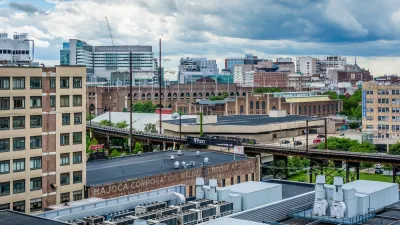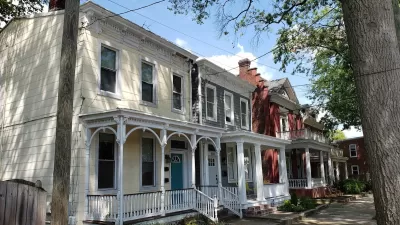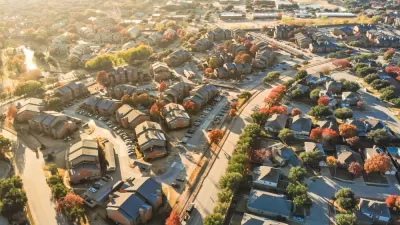Increasingly unaffordable housing in most U.S. metropolitan areas is pushing low-income workers farther away, decreasing their access to economic opportunities.

An in-depth examination of housing inequity in the 100 largest metropolitan areas in the United States by Thai Le, Edward Muña, Sarah Treuhaft, and Rasheedah Phillips delves into the “shrinking geography of opportunity” that is putting affordable housing and economic opportunities out of reach for many Americans.
“Not only is there an overall shortage of affordable rental homes, but they are rarely located in ‘high-opportunity’ neighborhoods that have high-quality schools, safe streets, clean air, parks, reliable transit, and proximity to jobs, retail, and services,” the authors write.
In the past, racially discriminatory policies, including redlining, urban renewal, and government-backed home loans (almost exclusively for white homebuyers), created geographic concentrations of opportunity and disadvantage throughout regions. Today, policies that are not explicitly discriminatory yet have racially inequitable impacts (e.g., exclusionary zoning), maintain these patterns of spatial inequality — effectively locking many people of color out of educational and economic opportunity.
The source link includes the full analysis, which concludes that “there is a growing gap in access to affordable housing and high-quality neighborhoods for working-class renters and renters of color.” The authors say that “Reversing the trend of shrinking neighborhood opportunity for low-income renters and ensuring that all residents have access to safe and affordable housing in opportunity-rich neighborhoods is crucial to reversing the racial and economic inequities that prevent equitable, prosperous regions.”
FULL STORY: The Shrinking Geography of Opportunity in Metro America

Planetizen Federal Action Tracker
A weekly monitor of how Trump’s orders and actions are impacting planners and planning in America.

San Francisco's School District Spent $105M To Build Affordable Housing for Teachers — And That's Just the Beginning
SFUSD joins a growing list of school districts using their land holdings to address housing affordability challenges faced by their own employees.

The Tiny, Adorable $7,000 Car Turning Japan Onto EVs
The single seat Mibot charges from a regular plug as quickly as an iPad, and is about half the price of an average EV.

Seattle's Plan for Adopting Driverless Cars
Equity, safety, accessibility and affordability are front of mind as the city prepares for robotaxis and other autonomous vehicles.

As Trump Phases Out FEMA, Is It Time to Flee the Floodplains?
With less federal funding available for disaster relief efforts, the need to relocate at-risk communities is more urgent than ever.

With Protected Lanes, 460% More People Commute by Bike
For those needing more ammo, more data proving what we already knew is here.
Urban Design for Planners 1: Software Tools
This six-course series explores essential urban design concepts using open source software and equips planners with the tools they need to participate fully in the urban design process.
Planning for Universal Design
Learn the tools for implementing Universal Design in planning regulations.
Smith Gee Studio
City of Charlotte
City of Camden Redevelopment Agency
City of Astoria
Transportation Research & Education Center (TREC) at Portland State University
US High Speed Rail Association
City of Camden Redevelopment Agency
Municipality of Princeton (NJ)





























